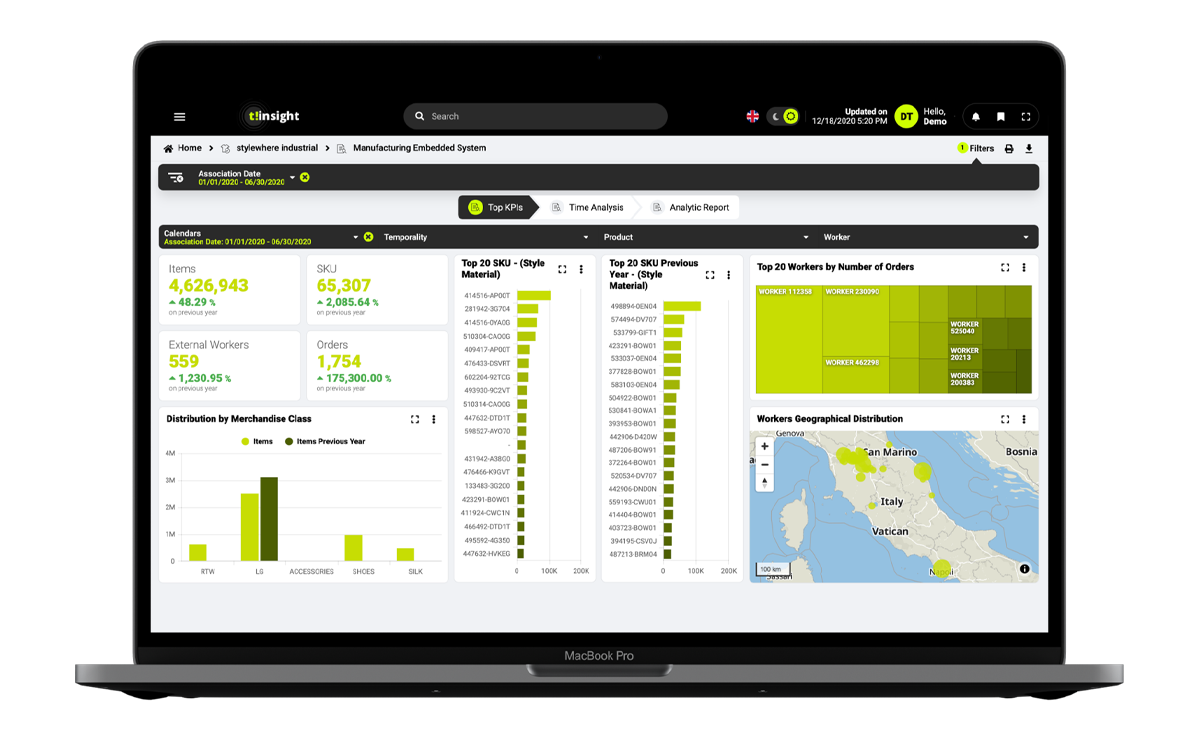Industry 4.0 calls for Logistics 4.0: the digitalisation of order management and goods transport processes is now an unstoppable trend for large enterprises.
This process, which has become even more urgent since Covid19 and the consequent rapid increase in online sales, is supported by the continuous evolution and integration of technologies such as Artificial Intelligence and the Internet of Things, introducing radical transformations in terms of Smart Logistics.
AI: Artificial Intelligence What it is and What it does
Artificial Intelligence (AI), as defined by the European Commission in 2018, is “the ability of machines to display human capacities such as reasoning, learning, planning, and creativity.”
Thanks to these characteristics, Artificial Intelligence – a generic term that includes many different types of technologies and applications, as we will see – is able to understand its environment, process what it perceives, and identify solutions for specific objectives: in other words, the system receives data previously prepared or collected with sensors, processes it, and ultimately provides the requested answer.
If we look at the definition provided by the Osservatorio Artificial Intelligence of the Politecnico di Milano, AI is “the branch of computer science that studies the development of Hardware and Software systems equipped with specific capacities typical of human beings (interaction with the environment, learning and adaptation, reasoning and planning), able to autonomously pursue a defined objective, making decisions which had previously only been entrusted to people.”
The scientific community has defined two types of artificial intelligence based on certain parameters: the capacity of these technologies to imitate human characteristics, the technology they use to do so, and their applications in the real world.
We can therefore speak of:
- Weak Artificial Intelligence, which includes systems able to simulate certain human cognitive functions, but which neither imitate nor replicate human intelligence. This type of AI is geared towards objectives and designed to carry out individual tasks;
- Strong Artificial Intelligence, which includes systems capable of becoming knowledgeable, that is, of imitating human intelligence and/or behaviour.
The Artificial Intelligence technologies used today fall under the first category, but achieving strong artificial intelligence is a challenge no longer relegated merely to the world of science fiction.
It was 1956 when a conference at Dartmouth College in Hanover, New Hampshire, marked the birth of the ‘Artificial Intelligence’ discipline, followed by decades of intense experimentation and alternating periods of stasis and progress, until now, with AI having become a primary field of interest for computer science experts, but also the technology which more than any other has defined the last decade, set to also influence the next.
And that’s not all: the ethical implications and social impact of AI are now such that in 2021, even the European Commission presented a proposal for a Regulatory framework on Artificial Intelligence to regulate the development, use, and marketing of these technologies.
What is Artificial Intelligence used for?
AI systems are used in many different ways in today’s society and economy, with certain applications exploiting this technology without us even knowing it.
For example, to name a few:
- in e-commerce and online shopping, AI can provide suggestions based on previous purchases, searches, or other behaviour adopted on the web, thus influencing the customer journey;
- many of the devices we use every day have virtual assistants which give suggestions, find solutions, or respond to our questions;
- in our homes, AI-based systems are used to optimise consumption, in cities, artificial intelligence can help improve mobility and reduce traffic jams;
- automatic translation software, or those which add automatic subtitles to videos, use AI to improve the results;
- and finally, even driverless vehicles, which are no longer just science fiction.
Artist: KOTA YAMAJI



